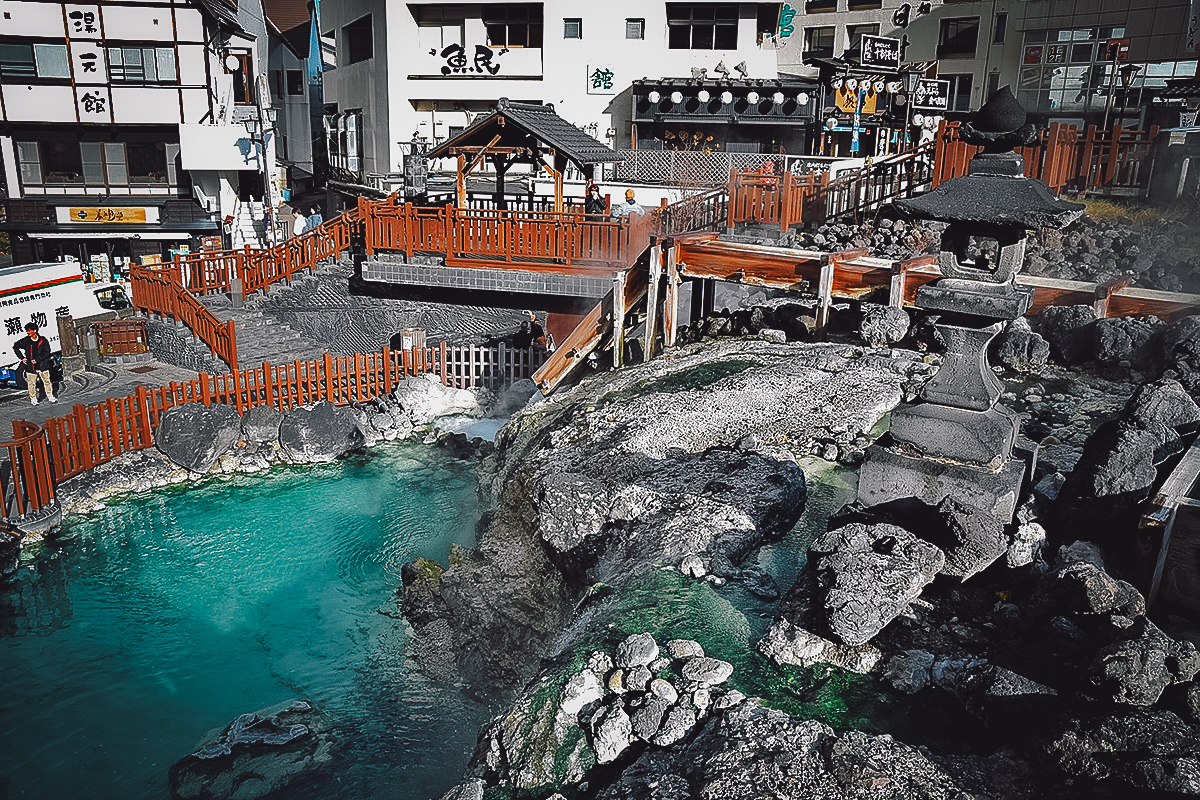SUMMARY HIGHLIGHTS
- Some of the most popular places you can visit with the Tokyo Wide Pass include Hakone, Lake Kawaguchi, Kamakura, and Nikko.
- I saved roughly JPY 10,500 on transportation with the pass.
Tokyo is ideal for longer stays. Not only is it a massive metropolis that offers a seemingly endless array of cool things to do and interesting neighborhoods to explore, it also serves as a great base for day trips.
There are a few rail passes you can use to explore the Kanto region and nearby areas but one of the most popular is the JR Tokyo Wide Pass. In this deep dive, we’ll talk about what the pass is and where it can take you. Most importantly, we’ll discuss whether the pass is worth the investment based on your personal travel plans.
In my case, seeing the cost of a shinkansen roundtrip to Gala Yuzawa alone made it a no-brainer.
VISIT TOKYO QUICK LINKS
To help you with your Tokyo trip planning, I’ve compiled links to top-rated hotels, tours, and other travel-related services here.
JR TOKYO WIDE PASS
You can purchase a JR Tokyo Wide Pass from trusted third-party websites like Klook, but it’s best to get it directly from JR East. I’ll explain why in the FAQs section of this guide.
HOTELS
Top-rated hotels in Shinjuku, one of the best areas to stay for first-time visitors to Tokyo.
- Luxury: Hilton Tokyo Hotel
- Midrange: SOTETSU GRAND FRESA TAKADANOBABA
- Budget: Guesthouse Akasaka
EXPERIENCES
- Sightseeing Tour: 3-Hour Tokyo City Highlights Sunset Bike Tour
- Kimono Rental: Asakusa Kimono Rental & Photography
- Food Tour: Wagyu Beef & Sake Paring Foodie Tour in Ginza
- Market Tour: Tsukiji Fish Market Walking Food Tour in Tokyo
- Cultural Experience: Learn Kintsugi and Breathe New Life Into Broken Pottery
- Cooking Class: Cooking Classes in Tokyo
OTHER SERVICES
- Travel Insurance
- Airport Transfers: Narita Airport | Haneda Airport
- Tokyo Subway Ticket
- Japan eSIM
GUIDE TABLE OF CONTENTS
WHAT IS THE JR TOKYO WIDE PASS?
The JR Tokyo Wide Pass is a rail pass that allows non-Japanese passport holders (including foreign residents) unlimited travel in and around Tokyo and the Kanto region for three (3) consecutive days.
Pass holders can travel by JR train and select non-JR trains to popular destinations around Tokyo like Lake Kawaguchi, Nikko, Gala Yuzawa, Hakone, Yokohama, and Kamakura. It’s also valid for travel on JR trains within the Tokyo metropolitan area and to and from Narita and Haneda airports.
The pass costs JPY 15,000 (May 2025) and can be purchased at multiple JR stations in the Tokyo area, including Narita and Haneda airports. The pass can also be purchased online on JR East or through partner websites like Klook. The Tokyo Wide Pass is a physical ticket, not a digital pass, so you’ll need to claim it from a JR station (or from the airport if purchased through Klook) before using it.
The following map* shows the areas covered by the Tokyo Wide Pass. Pass holders can travel along these routes as often as they want within the validity period of their pass. Jump to the FAQs section of this guide for more information on the Tokyo Wide Pass.
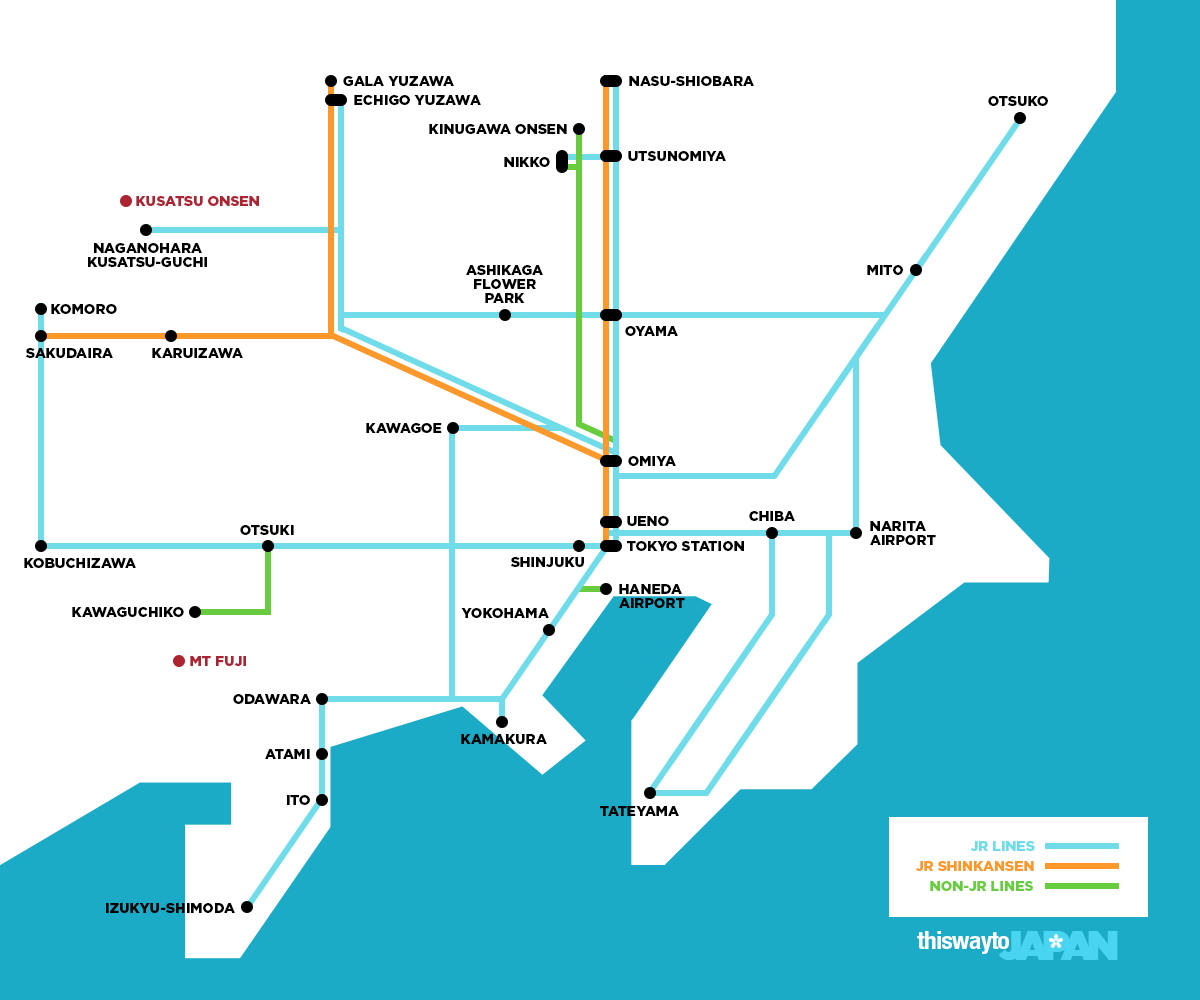
*Please note that the map above is a simplified version to help you visualize available routes. You can visit the JR East website to see all areas covered by the Tokyo Wide Pass.
PLACES TO VISIT WITH THE TOKYO WIDE PASS
This isn’t a complete list but highlighted below are some of the most popular destinations you can visit using a JR Tokyo Wide Pass.
Kawagoe
Kawagoe is a former castle town located in Saitama Prefecture, less than an hour northwest of central Tokyo. Often referred to as “Little Edo”, it’s an atmospheric town known for its well-preserved warehouses and traditional buildings, none more eye-catching than the old bell tower that stands in the heart of the Old Town.
Thanks to its proximity, Kawagoe is one of the easiest day trips you can make from Tokyo. You can use your Tokyo Wide Pass to get there, but it wouldn’t be the most optimal use of the pass since the fare to Kawagoe isn’t that high. To maximize the pass’ value, I suggest saving it for more distant destinations.
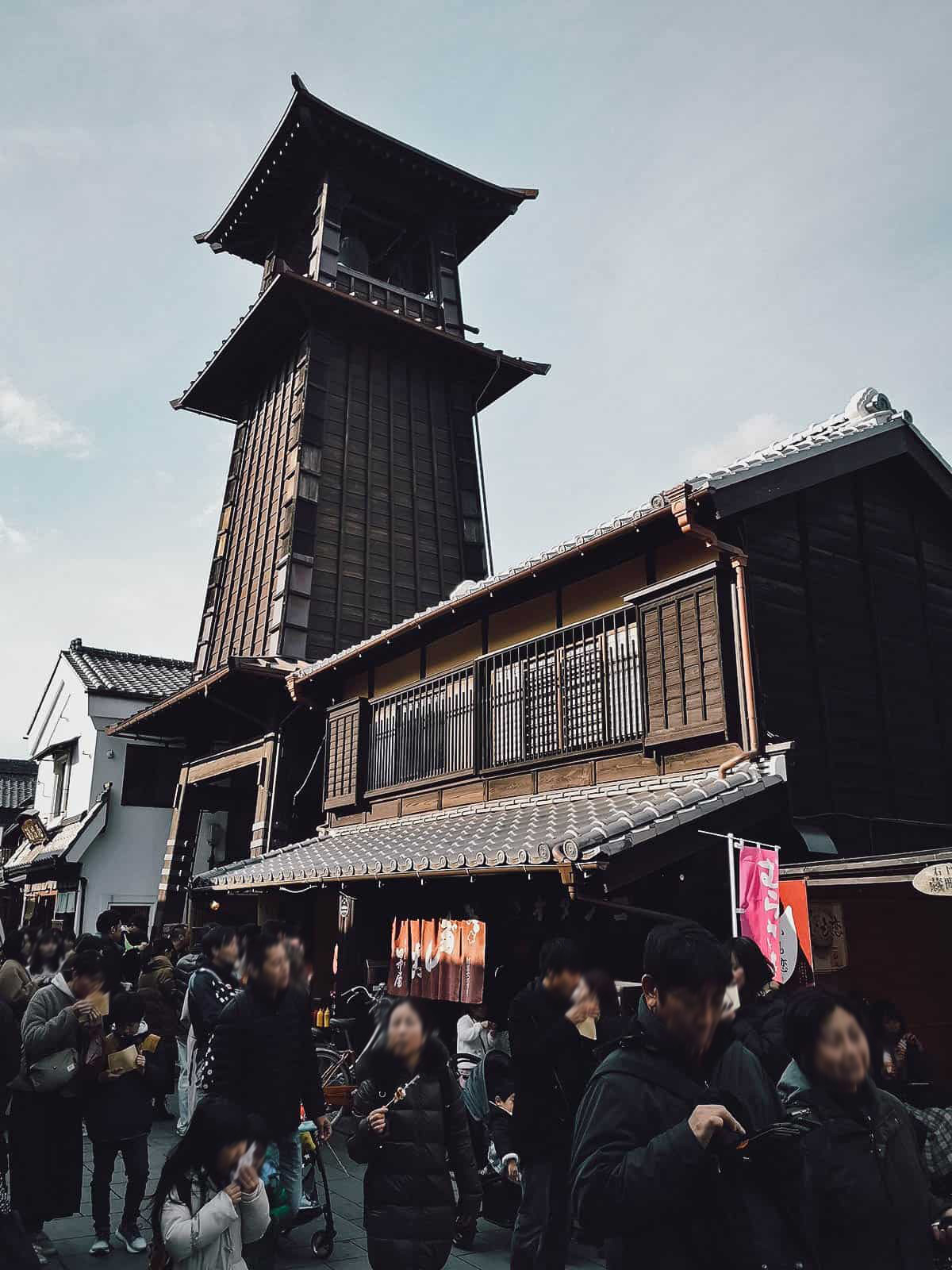
Yokohama
Yokohama is another popular day trip destination from Tokyo due to its proximity. Located less than an hour away from central Tokyo, it’s the capital of Kanagawa Prefecture and Japan’s second-largest city.
Yokohama is a big city but personally, I find it a little boring. Aside from its two ramen museums and Chinatown, it doesn’t seem to have as much in the way of interesting or unique attractions.
You can spend the day in Yokohama, but like Kawagoe, it may be best not to use your Tokyo Wide Pass for the trip. The fare to Yokohama isn’t that high so you won’t be maximizing the pass’ value if you do.
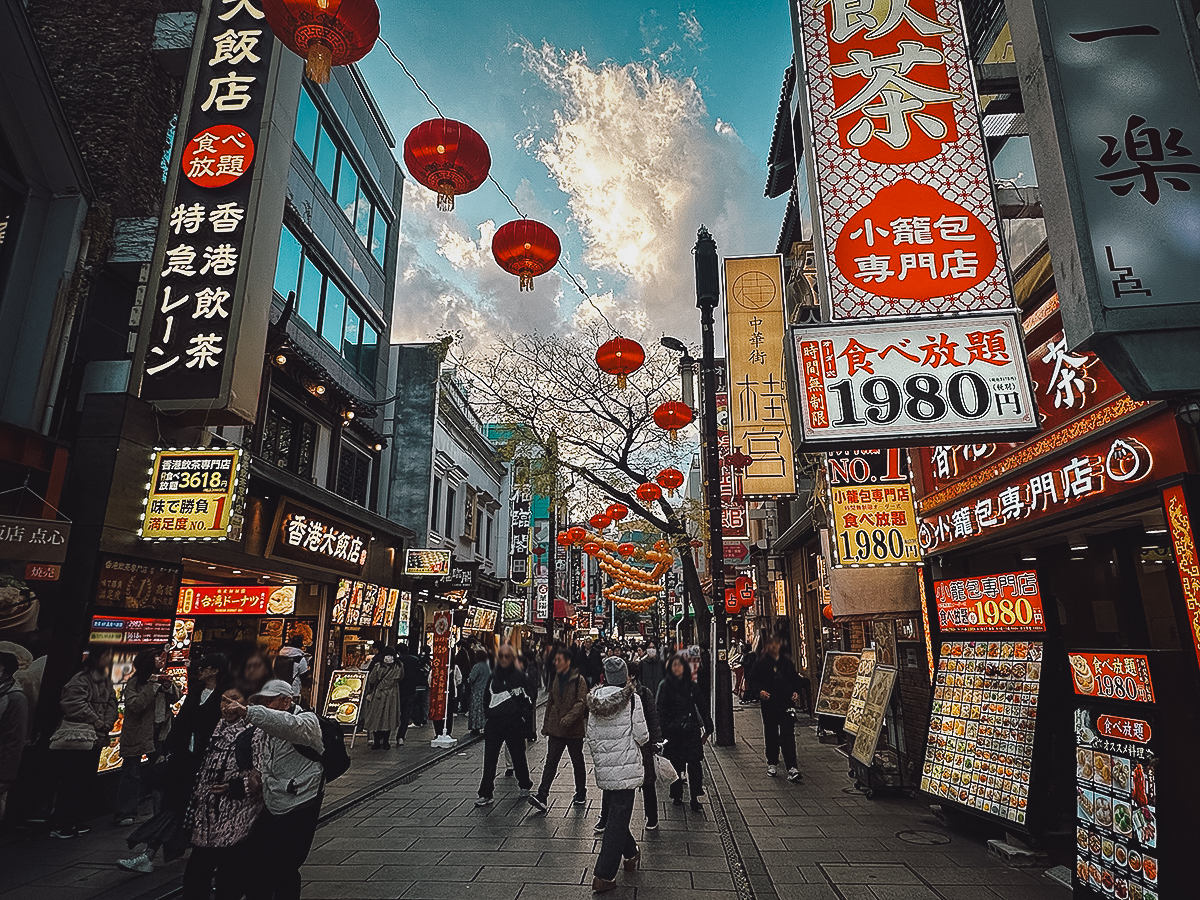
Kamakura
Located in Kanagawa Prefecture, just a little past Yokohama, Kamakura is one of the most popular day trips people make from Tokyo. Known as the “Kyoto of eastern Japan” thanks to its cluster of temples, shrines, and other cultural attractions, there’s so much to see and do in Kamakura that it’s worth staying for longer than a day.
There are many fascinating temples and shrines in Kamakura but none are more famous than the Great Buddha located on the grounds of Kotokuin Buddhist Temple. Built in 1252, this imposing bronze statue measures 11.3 meters tall (37.1 ft) and weighs in at around 121 tons.
As compelling a destination as Kamakura is, it’s located just a little over an hour from central Tokyo so it may be best to save your Tokyo Wide Pass for someplace else.
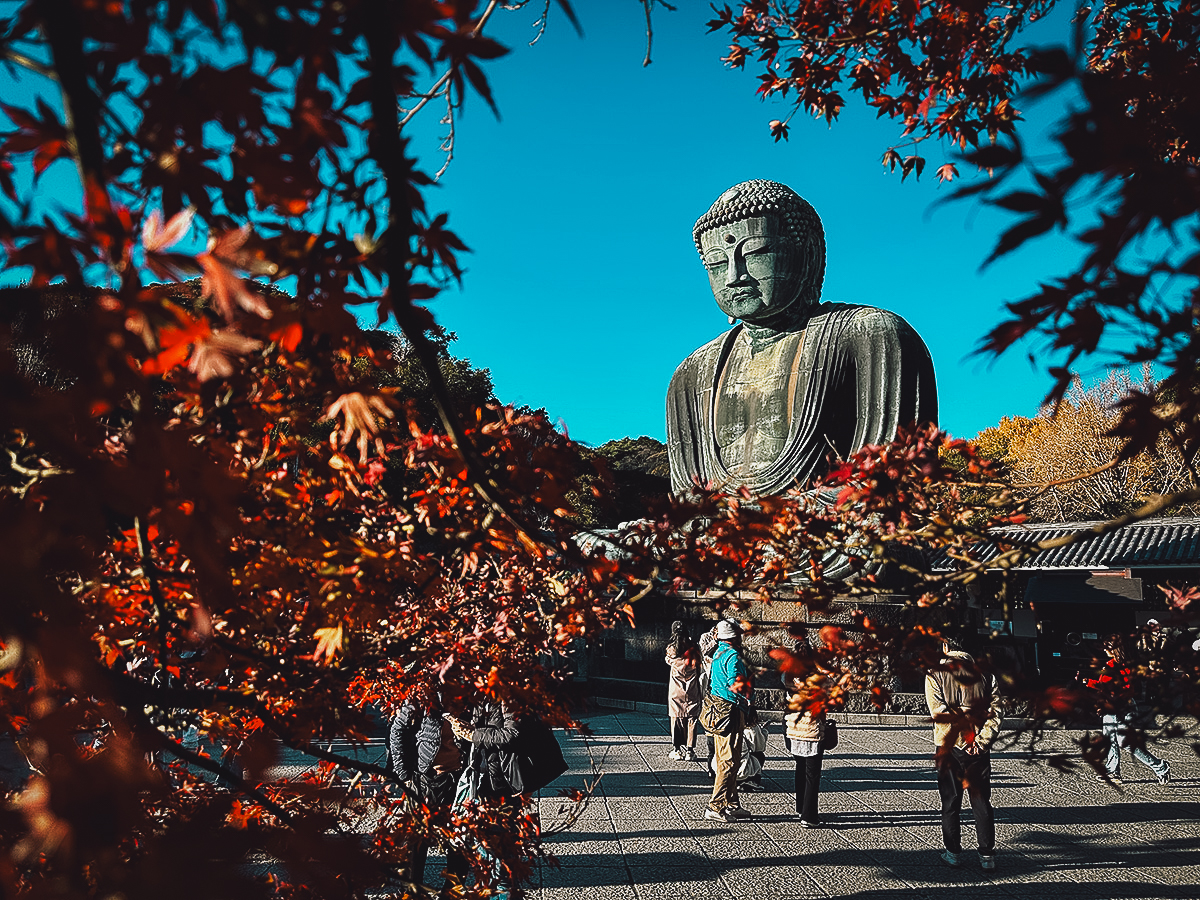
Kawaguchiko
When people think of the best places to visit on a day trip from Tokyo, Lake Kawaguchi is probably the first destination that comes to mind. Located in Yamanashi Prefecture, it’s the easiest of the five Fuji lakes to visit from Tokyo and offers some of the most breathtaking views of the iconic Mt Fuji.
Many people travel to Lake Kawaguchi by bus but you can also use your Tokyo Wide Pass to visit by train. A portion of the journey – from Otsuki to Kawaguchiko – is operated by Fujiku Railway (a non-JR company) but the pass entitles you to unlimited use of this line. From Shinjuku Station, the one-way trip takes a little over two hours.
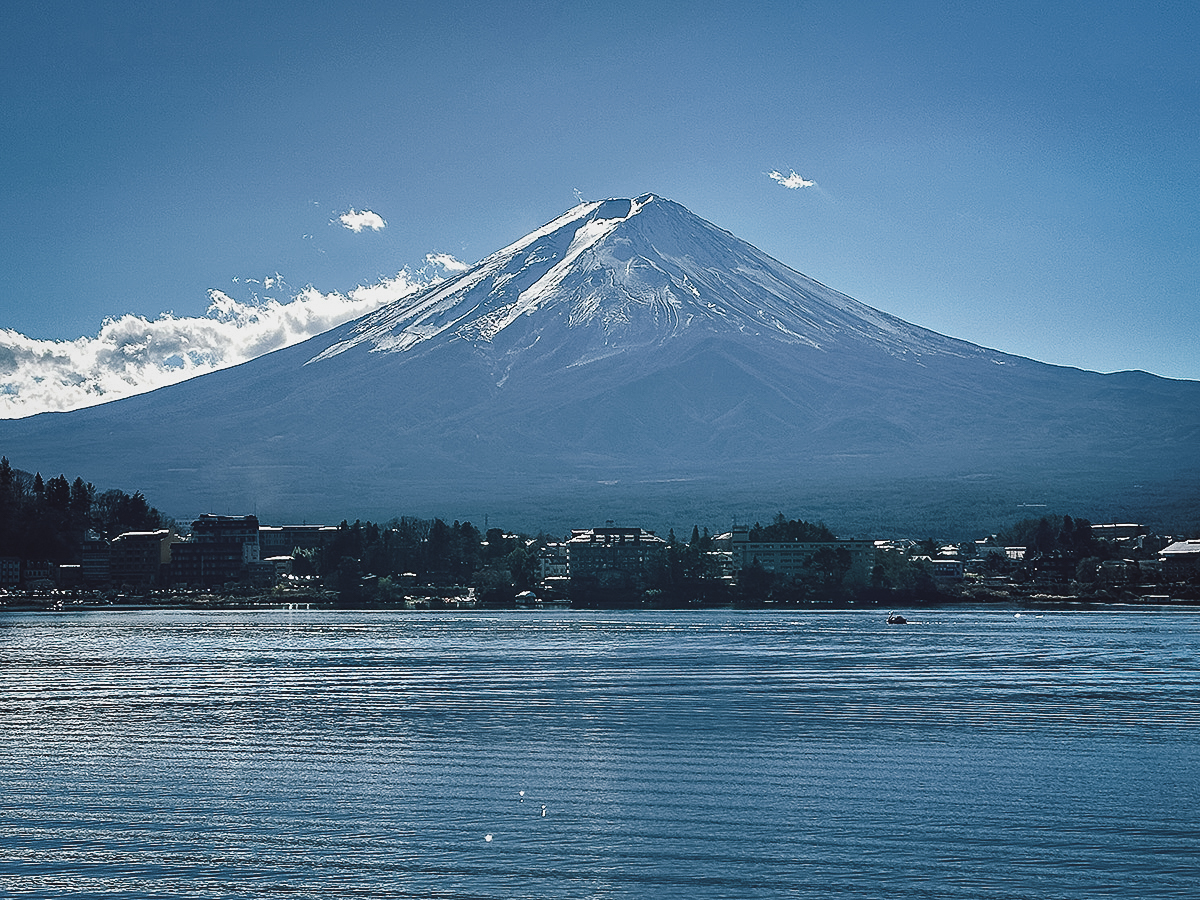
Hakone
Hakone is another popular destination that offers iconic views of Mt Fuji. The view isn’t as up close and majestic as what you’ll get at Lake Kawaguchi, but the myriad attractions in Hakone more than make up for it.
Located in Kanagawa Prefecture, around two hours southwest of Tokyo, Hakone is famous for its many onsen resorts, temples, hiking trails, and art museums. There is so much to see and do in Hakone that a day trip won’t do it justice. In my opinoin, it’s best to stay at least one night to fully appreciate the area.
The train fare to Hakone is pricey enough to warrant using the Tokyo Wide Pass, but it isn’t the best pass you can use to visit Hakone. This is especially true if you plan on staying overnight because you’ll be using one (or two) of the pass’ three days for a one-way trip instead of a round trip back to Tokyo.
The Tokyo Wide Pass only covers transportation until Odawara Station, the jumping off point for Hakone, but it isn’t valid for the network of trams, funiculars, cable cars, boats, and buses you’ll need to fully explore the Hakone area. For that reason, I suggest using the Hakone Free Pass instead.
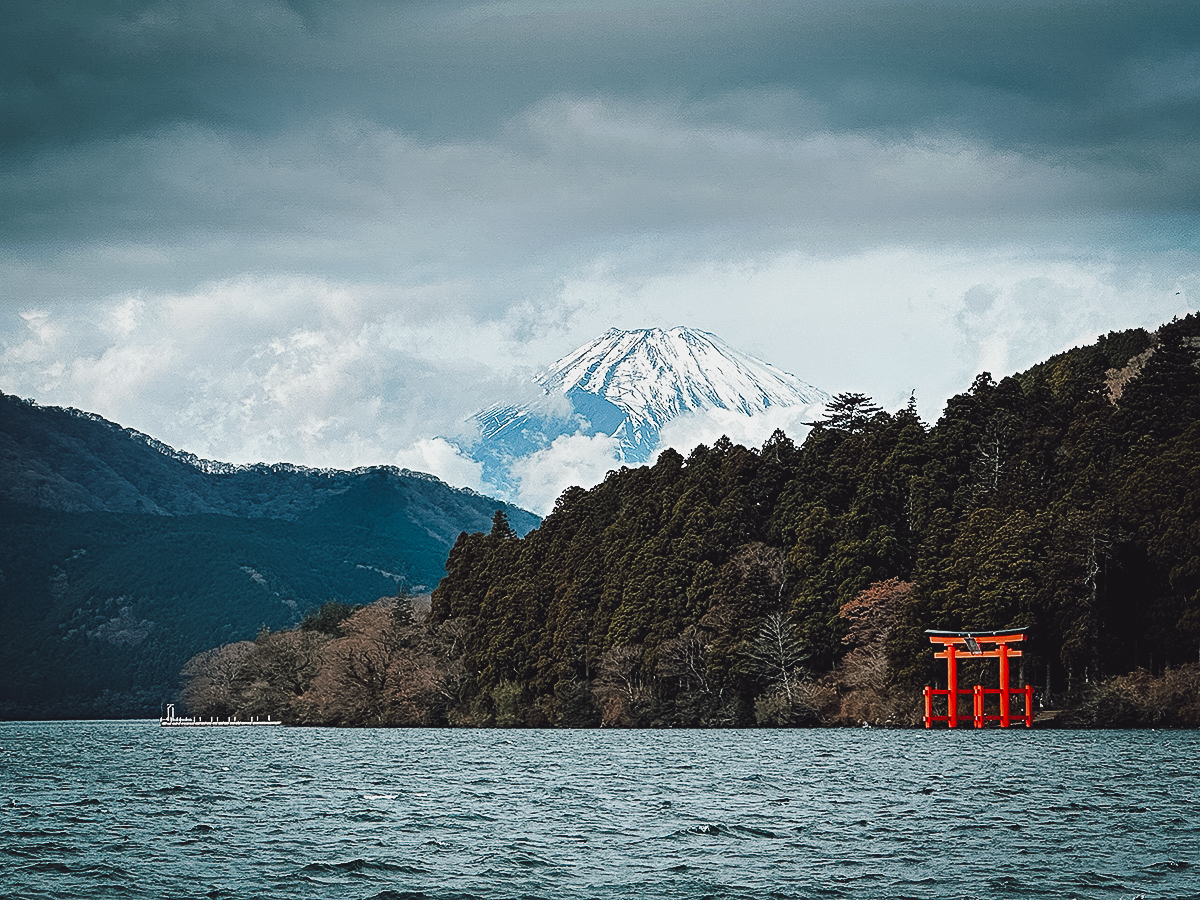
Nikko
Located in Tochigi Prefecture, Nikko is a UNESCO World Heritage Site that served as a center for Shinto and Buddhist worship for centuries. It’s home to many temples and shrines – including the renowned Toshogu Shrine – and serves as a gateway to Nikko National Park, a mountainous region known for its waterfalls, lakes, marshlands, and hiking trails.
Nikko is worth visiting at any time of the year but it becomes especially beautiful in autumn, thanks to a forested landscape that erupts in a striking kaleidoscope of reds, oranges, and yellows. It’s known for being one of the best koyo (autumn leaves) viewing spots in Japan.
If you’re interested only in Nikko’s temples and shrines, then it’s a great destination to visit on a day trip from Tokyo. If you’d like to explore Nikko National Park, then it’s best to stay at least overnight.
The Tokyo Wide Pass is a great pass to use on a day trip to Nikko as it includes travel on the Tobu Railway Express (non-JR) to Tobu-Nikko Station. But if you’d like to stay overnight or longer, then it’s better to get a Nikko Pass. Not only will it cover the roundtrip fare from Tokyo, but it’ll also entitle you to unlimited use of transportation within the Nikko area.

RELATED ARTICLE: Luxury Experiences in Tokyo
Kusatsu Onsen
Japan is fond of making “three great” lists – like its three great scenic views, three great landscaped gardens, and three great nighttime views. Kusatsu Onsen, nestled 1,200 meters (3,937 ft) above sea level in the mountains of Gunma Prefecture, is considered one of Japan’s three great onsens.
Kusatsu Onsen is known for its high-quality, mineral-rich spring waters that are said to cure various ailments. It’s one of the most famous hot spring resorts in Japan and a great place to visit from Tokyo for a traditional onsen experience.
With a Tokyo Wide Pass, you can take a train to Naganohara-Kusatsuguchi Station (around 2.5 hours from Tokyo) before catching a JR bus to Kusatsu Onsen. Unfortunately, only the train ride is covered by the pass so you’ll need to pay a little extra for the bus.
Karuizawa
Karuizawa is an upmarket highland resort located at the foot of Mt Asama in Nagano Prefecture. Known for its natural beauty, it offers a variety of outdoor activities like hiking, cycling, and skiing in winter, not to mention lots of shopping and dining opportunities.
Based on what I’ve read, Karuizawa has been promoted as a summer retreat to Tokyo’s elite since the late 1800s. Today, many wealthy urbanites own second homes there and use it as a weekend getaway to escape the summer heat.
Thanks to the shinkansen, you can reach Karuizawa in a little over an hour using your Tokyo Wide Pass.
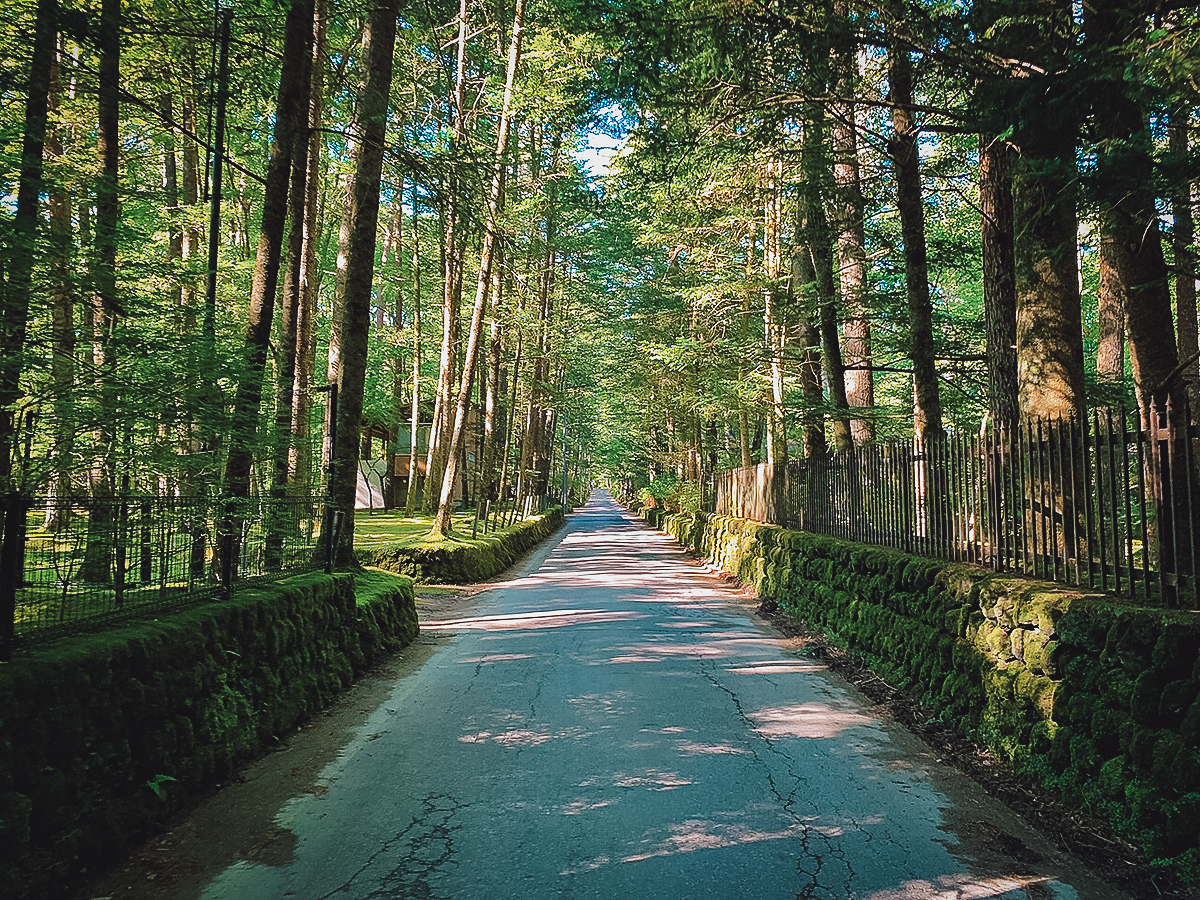
Photo by Ansjdjducciddkdjd, CC BY-SA 4.0, via Wikimedia Commons / Processed in Photoshop and Lightroom
Atami
If soaking in a hot spring bath with ocean views sounds appealing to you, then Atami might be the onsen town for you. Unlike the more traditional Kusatsu Onsen, Atami is a highly developed hot spring town situated along the coast of Izu peninsula in Shizuoka Prefecture.
Known for its onsens, beaches, seaside apartments, and large ryokans, Atami came to prominence in the late 1980s when it became a popular destination for business retreats. It’s popularity has since declined but its proximity to Tokyo – about two hours away – still makes it a decent option for a day trip from the capital.
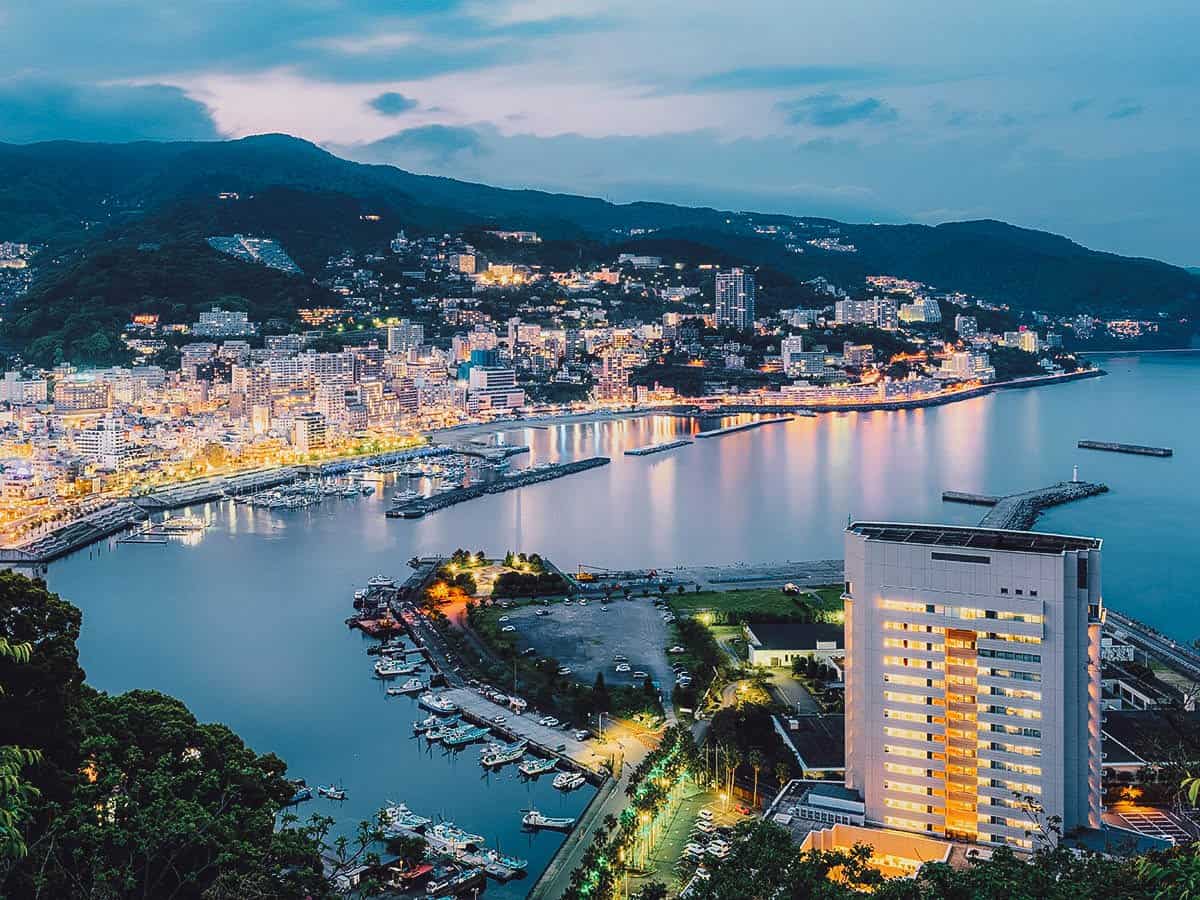
Photo by Sean Pavone via Shutterstock
Ashikaga Flower Park
If you like flowers, then you’ll probably want to visit Ashikaga Flower Park in Tochigi Prefecture, one of the best places to view wisteria flowers. Known in Japanese as “fuji”, wisteria flowers are one of the most beloved flowers in Japan.
Ashikaga Flower Park is home to many types of flowers but its most prized residents are its wisteria trees bearing blue, white, and pink fuji flowers. Different types of flowers are in bloom throughout the year but if you’d like to see wisteria, then it’s best to visit the park at the start of May.
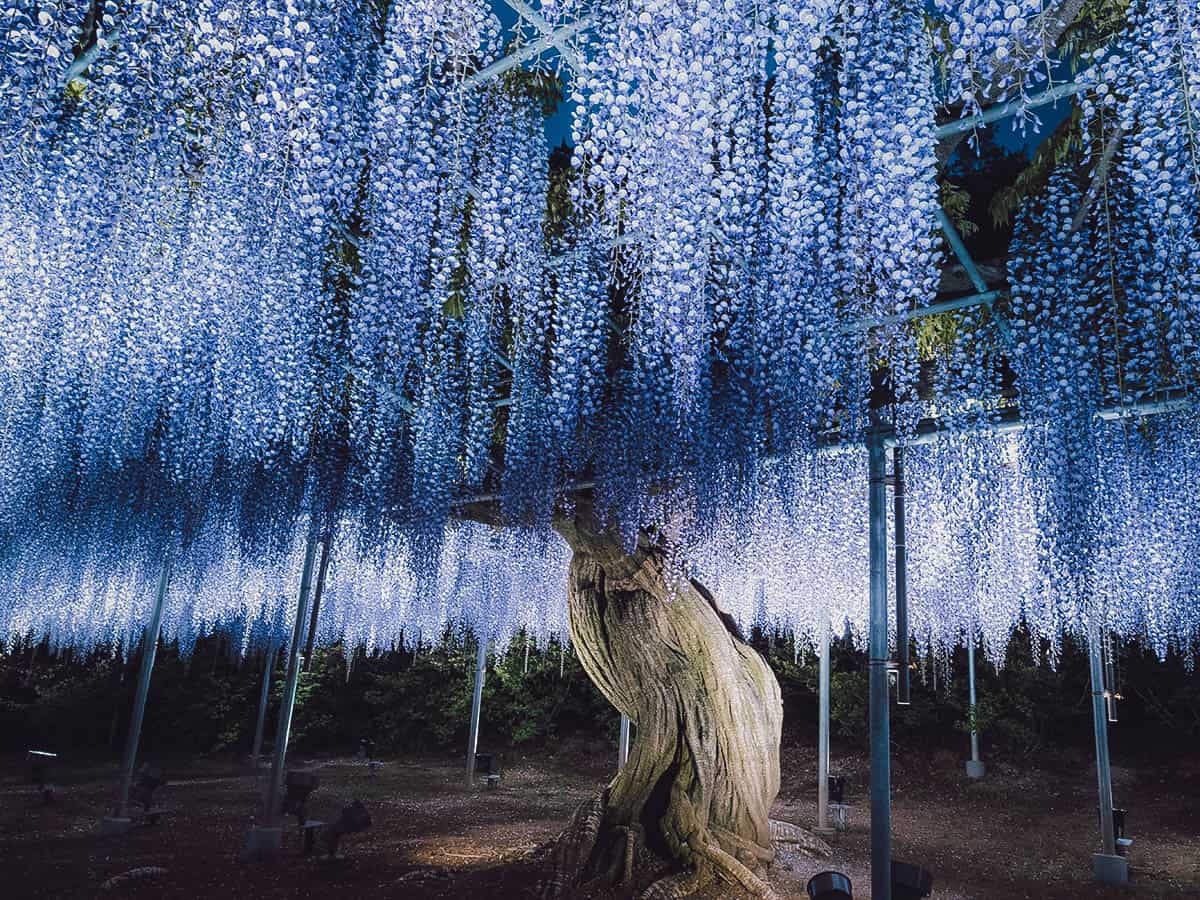
Photo by jaruncha via Shutterstock
Kinugawa Onsen
Kinugawa Onsen is another popular hot spring resort you can visit from Tokyo. It’s located in Tochigi Prefecture, close to Nikko, and is included in the free travel zone of the Nikko Pass.
Lined with hotels and ryokan along the Kinugawa River, this overdeveloped onsen town has suffered a similar fate as Atami. Once a sought-after destination for business retreats, its popularity declined sharply with the economic downturn of the early 1990s, leaving behind a slew of abandoned buildings throughout town.
In spite of its somewhat ghostly present, many fine hotels and ryokan continue to operate in Kinugawa Onsen. Its glory days may be behind it but it remains a decent hot spring destination from Tokyo, especially for holders of a Nikko Pass.
Personally, I’d skip Kinugawa Onsen and use my Tokyo Wide Pass for Kusatsu Onsen instead.
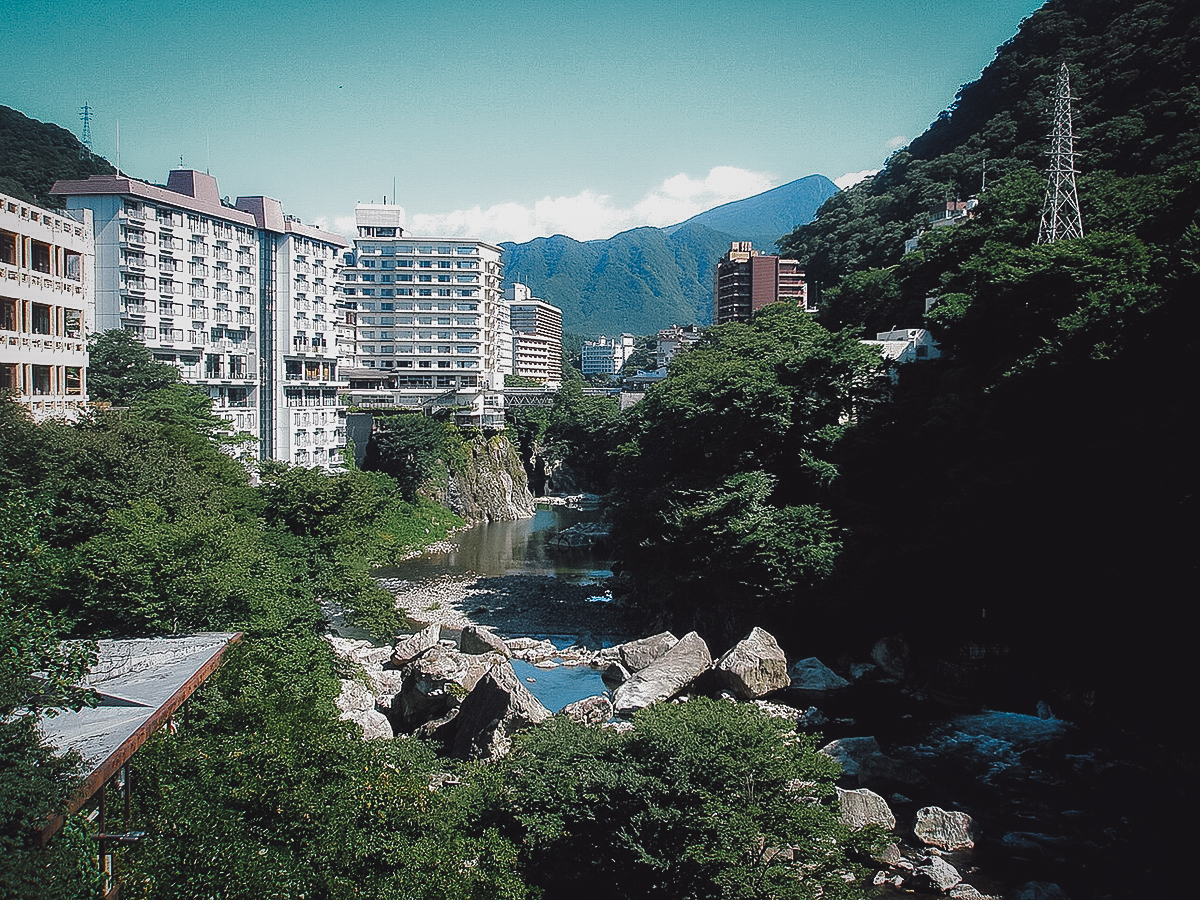
Photo by 掬茶, CC BY-SA 3.0, via Wikimedia Commons / Processed in Photoshop and Lightroom
Gala Yuzawa
If you visit Tokyo in winter, then the roundtrip fare to this ski resort alone is almost enough to recoup the cost of the Tokyo Wide Pass.
Located in Niigata Prefecture, Gala Yuzawa is one of the easiest ski resorts to visit on a day trip from Tokyo. The shinkansen will get you to the ski resort in around two-and-a-half hours. The moment you exit the JR station gate, you’ll find yourself inside the resort’s main lodge, just by the lift ticket queues. How cool is that?
You can use the Tokyo Wide Pass to travel to Gala Yuzawa only during ski season (winter and spring). Pass holders are entitled to discounts on gondola and lift tickets so I suggest following the Gala Yuzawa Facebook page for announcements.
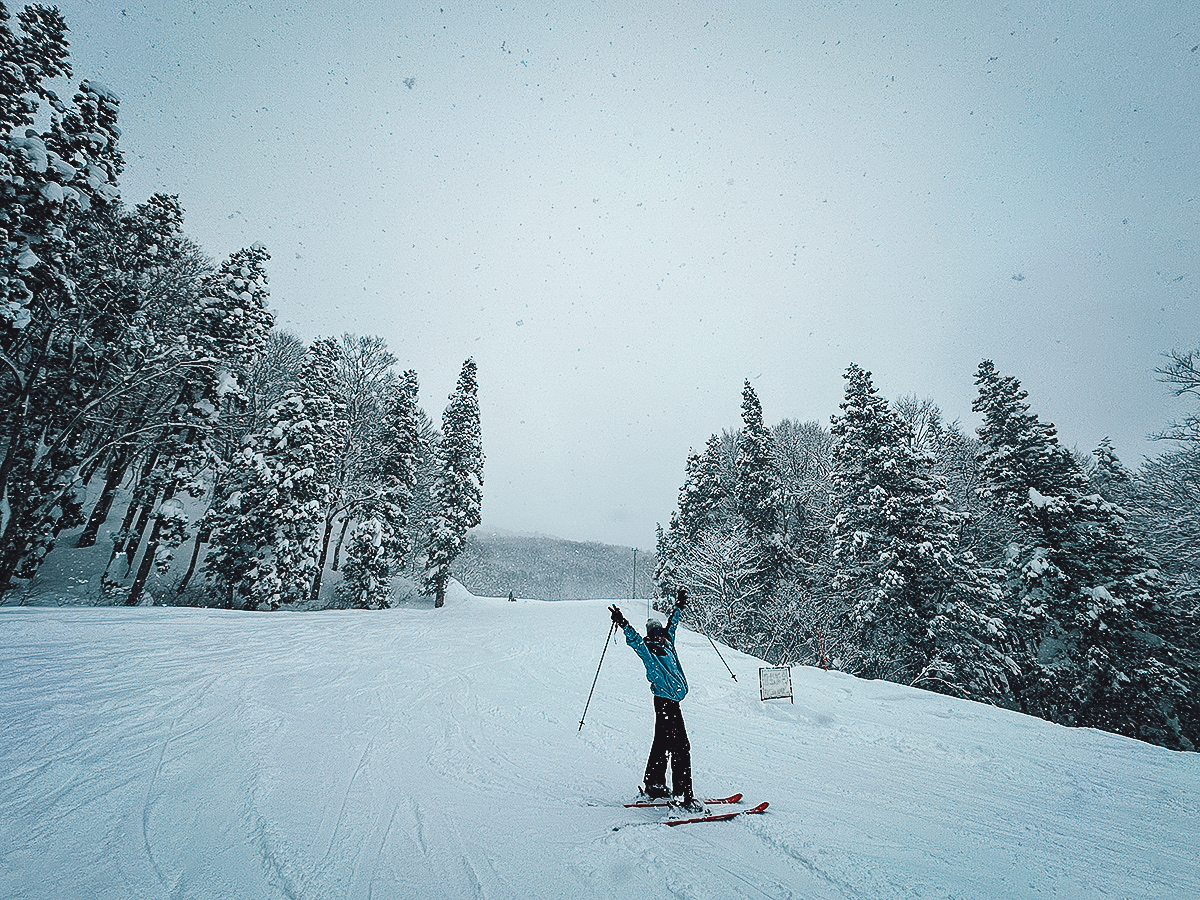
JR TOKYO WIDE PASS FAQs
How much is the Tokyo Wide Pass and where can I buy it?
The Tokyo Wide Pass costs JPY 15,000 and can be purchased at major JR stations in Tokyo, including Narita and Haneda airports.
The Tokyo Wide Pass can also be purchased online from JR East or through partner websites like Klook, though I suggest getting it directly from JR East. Not only is it cheaper, but it’ll allow you to make seat reservations online using the JR East website.
If you purchase the pass online through JR East, then you’ll need to claim the physical ticket at a JR station before using it. If you purchase it through Klook, then you can pick it up at designated counters at Narita and Haneda airports.
How long is it valid for?
The Tokyo Wide Pass is valid for three (3) consecutive calendar days, not 24-hour periods. This means that even if you start using the pass at 11 PM on January 1st, January 1st will still count as your first full day.
How do I use the pass?
The Tokyo Wide Pass is a physical ticket, similar in size to a credit card. Each time you use it, you’ll need to insert it into the station gate. The ticket will be returned through the gate’s exit slot so don’t forget to retrieve it before passing through!
Can I use the pass on local trains within Tokyo?
Yes you can, but only if they’re operated by JR East.
To see which lines are eligible, you can plot your trip using Google Maps. Click on “Details” for your chosen route and scroll down to see the line’s operating company. If it’s JR East, then you can use it.
If you’re staying near a JR station, then you can use the pass to travel between your hotel and the origin station (ie Shinjuku) on each day of its validity.
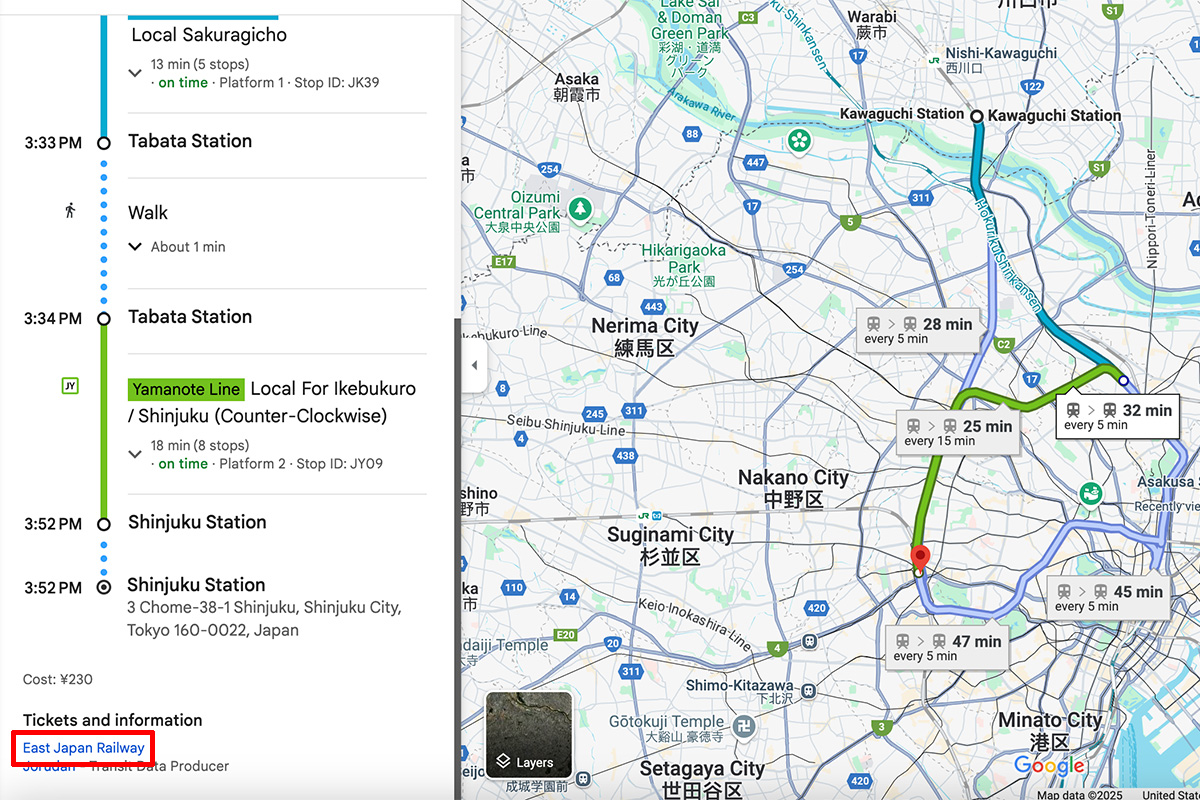
Is the pass transferrable?
No, it isn’t. It can only be used by one person. Since the pass can only be used by non-Japanese passport holders, it’s a good idea to bring your passport at all times for verification.
Do I need to reserve seats?
JR trains have cars with reserved seats and cars with non-reserved seats, so making seat reservations isn’t required.* However, many of these destinations around Tokyo are popular so it’s a good idea to do so, especially during peak seasons.
In my experience, reserved seats ran out not too long after they became available, especially to Lake Kawaguchi. Having to stand for two hours or more doesn’t sound like fun.
*While the vast majority of trains in Japan have cars with non-reserved seating, a small number of trains are fully reserved. If you don’t plan on making seat reservations, then it’s important to confirm that the train you intend to take has cars with non-reserved seats.
How do I make seat reservations?
You can reserve seats at ticket vending machines or through JR station ticketing offices. You’ll need to do this before boarding. If you don’t want a reserved seat, then just show them your Tokyo Wide Pass and look for an empty seat in a non-reserved car.
You can also reserve seats online but you’ll need to purchase your Tokyo Wide Pass through JR East. You can make reservations through their website after purchasing the pass. Like the Tokyo Wide Pass itself, you’ll need to pick up the physical tickets for the seat reservations at a JR station.
Seat reservations can be made up to one (1) month in advance.
Where can I get more information?
If you need more information about the Tokyo Wide Pass, then you can visit the JR East website.
IS THE JR TOKYO WIDE PASS WORTH IT?
Like any rail pass in Japan, it depends on how often you use it. If you use it for nearby destinations like Kamakura and Yokohama, then it won’t be worth the investment. But if you use it to visit more distant places like Gala Yuzawa and Kusatsu Onsen, then it will save you a significant amount of money.
Here’s a sample itinerary:
DAY 1: Tokyo-Kawaguchiko-Tokyo
DAY 2: Tokyo-Nikko-Tokyo
DAY 3: Tokyo-Gala Yuzawa-Tokyo
Using Google Maps to estimate fares, the total transportation cost for the itinerary above is roughly JPY 25,500 (February 2025). In this case, the Tokyo Wide Pass will save you around JPY 10,500.
Keep in mind that this estimated cost is only for the roundtrip fare between the origin station in Tokyo and the final destination. It doesn’t include the fare between your hotel and the origin station (if eligible). Factor them in and it makes the pass an even better value!
Disclosure
Some of the links in this article on the JR Tokyo Wide Pass are affiliate links, meaning we’ll get a small commission if you make a purchase at no added cost to you. We only recommend products and services that we use ourselves and firmly believe in. We really appreciate your support as this helps us make more of these free travel guides. Arigato gozaimasu!

